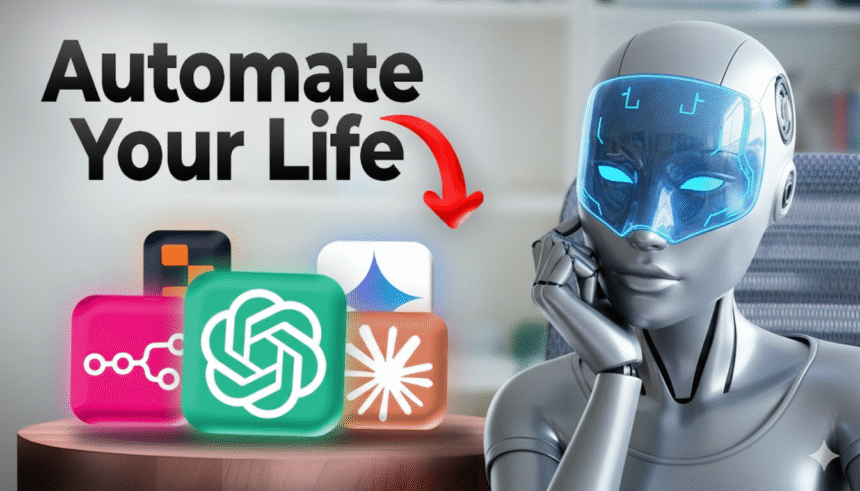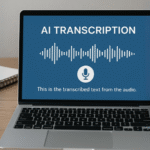Learning how to automate your life with AI can completely transform how you manage time, work, and personal goals. Artificial intelligence isn’t just for tech experts anymore, it’s a practical tool for anyone looking to simplify daily routines, boost productivity, and reduce unnecessary costs.
Whether it’s scheduling meetings, managing your budget, or organising your home, automation allows you to focus on what truly matters while AI handles the repetitive details.
This comprehensive guide explores how everyday people can use AI-powered tools to save time and money. From virtual assistants to smart budgeting apps and home automation systems, you’ll learn how to build an efficient, tech-supported lifestyle that improves both convenience and quality of life.
Understanding AI Automation in Everyday Life
Artificial intelligence automation refers to the use of smart algorithms to handle routine or repetitive tasks that would normally require human effort. Unlike traditional automation, AI learns from your habits and preferences, adapting to your lifestyle over time.
AI automation now powers almost every aspect of modern living, from chatbots that schedule appointments to smart devices that regulate home energy use. With the right setup, you can automate communication, planning, shopping, and even self-care routines, saving hours each week.
Automating Work and Productivity
AI tools are revolutionising how professionals manage their workflow. Instead of juggling emails, deadlines, and meetings manually, you can delegate much of that to automation platforms.
- Email and Schedule Management: Tools like Google Assistant, Microsoft Copilot, and Motion can automatically schedule meetings, prioritise tasks, and send follow-up emails.
- Task Management: Notion AI, ClickUp AI, and Todoist automate task sorting and reminders based on urgency or deadlines.
- Writing and Communication: Platforms such as ChatGPT, GrammarlyGO, and Jasper streamline writing, editing, and content creation, saving time for creative or strategic thinking.
These tools don’t just make you more efficient, they eliminate cognitive overload by managing small but time-consuming tasks in the background.
Using AI to Manage Personal Finances
If you’ve ever struggled to keep track of expenses or stay on top of bills, AI can take that burden off your shoulders. Financial automation helps you make smarter money decisions without manual tracking.
- Smart Budgeting Apps: Apps like Cleo, Monzo, and Plum analyse your spending patterns and automatically move money into savings or investments.
- Expense Tracking: Mint and YNAB (You Need A Budget) use AI to categorise spending and alert you to unusual transactions.
- Investment and Saving Bots: Wealthify, Chip, and Betterment automate investing, tailoring portfolios to your goals and risk level.
By automating your finances, you avoid late payments, unnecessary subscriptions, and impulsive spending, giving you better control and peace of mind.
AI-Powered Health and Wellness Automation
Health and wellbeing are other areas where learning how to automate your life with AI can make a lasting difference. Smart health devices and apps now track your activity, sleep, and nutrition; automatically adjusting recommendations as they learn more about your habits.
- Fitness Tracking: Devices like Fitbit, Garmin, and Apple Watch use AI to set daily movement goals and suggest improvements.
- Meal Planning: Apps such as Yummly and MyFitnessPal use AI to create personalised meal plans based on your preferences, dietary needs, and calorie goals.
- Mental Health and Focus: Platforms like Calm, Headspace, and Replika AI use conversational AI and adaptive programs to reduce stress and improve mindfulness.
These tools remove the guesswork from health management, ensuring consistent progress toward personal wellbeing goals.
Smart Home Automation
The smart home is one of the clearest examples of AI automation in action. With devices interconnected through voice assistants and sensors, your home can now “think” for itself.
- Voice Assistants: Amazon Alexa, Google Home, and Apple HomeKit allow you to control lighting, appliances, and entertainment with simple voice commands.
- Energy Efficiency: AI thermostats like Nest learn your schedule and adjust temperatures automatically to save on energy bills.
- Home Security: Smart doorbells and surveillance systems like Ring and Arlo use facial recognition and motion detection for safety alerts.
These innovations save both energy and money, creating a home environment that responds intelligently to your needs.
AI for Shopping and Daily Tasks
AI automation extends to how you shop, cook, and plan errands. E-commerce platforms and delivery services increasingly use AI to predict your needs and save you time.
- Smart Shopping Assistants: Tools like Honey and Capital One Shopping automatically find discount codes and price drops.
- Grocery Delivery Apps: Instacart and Amazon Fresh use AI to remember your previous orders and suggest new products.
- Subscription Management: Apps like Truebill (Rocket Money) automatically cancel unused subscriptions and renegotiate bills.
By letting AI handle these everyday logistics, you can cut costs and free up mental space for more meaningful activities.
Balancing Automation and Human Touch
While learning how to automate your life with AI can create huge efficiencies, balance remains key. Over-automation can make life feel impersonal or overly mechanical. The goal is not to replace human effort entirely, but to delegate routine tasks so you can focus on creativity, relationships, and wellbeing.
Think of AI as a personal assistant, not a replacement for your decision-making. Review automated processes periodically to ensure they still align with your goals and values.
FAQs on How to Automate Your Life with AI
What does it mean to automate your life with AI?
To automate your life with AI means using intelligent tools and software to handle repetitive daily tasks such as scheduling, budgeting, shopping, or home control. These tools learn from your habits to simplify decision-making and save you time and money.
How can I start automating my life with AI?
Begin by identifying time-consuming activities like managing emails, bills, or shopping, then use AI apps to handle them. Start small with tools such as Google Assistant for scheduling, Mint for budgeting, or Alexa for smart home control.
What are the best AI tools for personal productivity?
Top AI tools for productivity include Notion AI, Microsoft Copilot, GrammarlyGO, and Motion. They help with writing, scheduling, and managing projects automatically, allowing you to focus on creative or strategic work.
Is automating your life with AI safe?
Generally, yes but it depends on how you manage data and permissions. Always use reputable apps, enable two-factor authentication, and review privacy settings to ensure your personal information remains secure.
What are examples of AI automation at home?
Smart devices such as Google Home, Amazon Alexa, and Nest thermostats can automate lighting, temperature, and security. These systems adapt to your habits and make daily living more efficient and comfortable.






